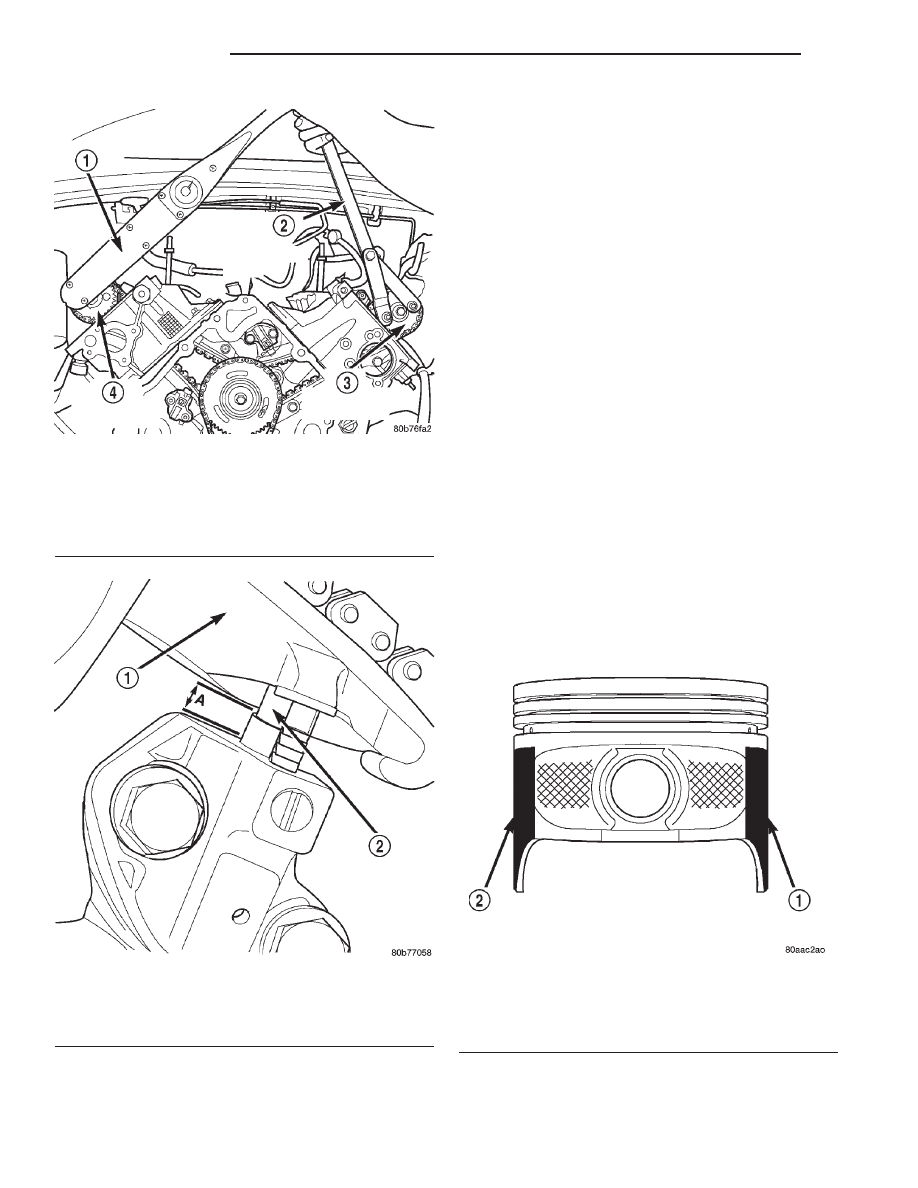Jeep Grand Cherokee WJ. Manual - part 328

PISTONS—FITTING
BORE GAGE METHOD
(1) To correctly select the proper size piston, a cyl-
inder bore gauge, capable of reading in 0.003 mm
(.0001 in.) INCREMENTS is required. If a bore
gauge is not available, do not use an inside microme-
ter.
(2) Measure the inside diameter of the cylinder
bore at a point 49.5 mm (1-15/16 inches) below top of
bore. Start perpendicular (across or at 90 degrees) to
the axis of the crankshaft at point A and then take
an additional bore reading 90 degrees to that at point
B (Fig. 13).
(3) The coated pistons will be serviced with the
piston pin and connecting rod pre-assembled. Tin
coated pistons should not be used as replacements for
coated pistons.
(4) The coating material is applied to the piston
after the final piston machining process. Measuring
the outside diameter of a coated piston will not pro-
vide accurate results (Fig. 12). Therefore measuring
the inside diameter of the cylinder bore with a dial
Bore Gauge is MANDATORY. To correctly select the
proper size piston, a cylinder bore gauge capable of
reading in 0.003 mm (.0001 in.) increments is
required.
(5) Piston
installation
into
the
cylinder
bore
requires slightly more pressure than that required
for non-coated pistons. The bonded coating on the
piston will give the appearance of a line-to-line fit
with the cylinder bore.
Fig. 10 Camshaft Sprocket Installation—Right
Cylinder Head
1 – TORQUE WRENCH
2 – SPECIAL TOOL 6958 WITH ADAPTER PINS 8346
3 – LEFT CAMSHAFT SPROCKET
4 – RIGHT CAMSHAFT SPROCKET
Fig. 11 Measuring Secondary Timing Chains For
Stretch
1 – SECONDARY TENSIONER ARM
2 – SECONDARY CHAIN TENSIONER PISTON
Fig. 12 Moly Coated Piston
1 – MOLY COATED
2 – MOLY COATED
9 - 78
4.7L ENGINE
WJ
SERVICE PROCEDURES (Continued)